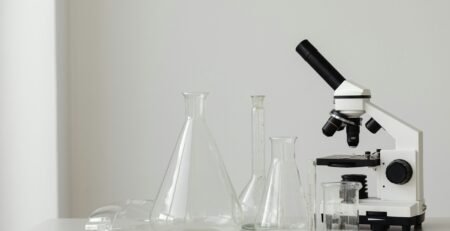4
Sep
Vacuum Filtration in the Lab: Choosing the Right Buchner Flask and Funnel
Vacuum filtration is one of the most common separation techniques in laboratories, allowing solids to be quickly and efficiently separated from liquids. At the centre of this process are the Buchner flask and Buchner funnel, both designed for safe and effective vacuum use. For Australian schools, universities, and research labs, selecting the right filtration setup is essential for reliable results and safety compliance.
The Role of the Buchner Flask
Buchner flasks, also known as vacuum flasks or filter flasks, are manufactured from thick-walled borosilicate glass (BORO 3.3) to withstand reduced pressure.
- Side-arm connection allows attachment to a vacuum pump or aspirator.
- Heavy-duty construction prevents implosion under vacuum.
- Available in multiple volumes, from small-scale teaching to large industrial use.
- Compliant with ASTM E960 and ISO 1773 standards for laboratory filter flasks.
These flasks form the foundation of any vacuum filtration system.
The Role of the Buchner Funnel
Buchner funnels are typically made from porcelain, glass, or plastic and paired with filter paper.
- Flat perforated base supports filter paper for efficient separation.
- Designed to sit securely in the flask using a rubber stopper or adapter.
- Porcelain funnels provide durability and chemical resistance.
- Glass versions offer transparency for monitoring the process.
Both the funnel and flask must be compatible in size to ensure a tight, leak-free seal.
Comparison Table: Buchner Flask vs Buchner Funnel
| Feature | Buchner Flask | Buchner Funnel |
|---|---|---|
| Function | Collects filtrate under vacuum | Holds solid residue on filter paper |
| Material | BORO 3.3 Borosilicate Glass | Porcelain, glass, or polypropylene |
| Design | Thick-walled with side-arm | Perforated base for filter support |
| Standards Compliance | ISO 1773, ASTM E960 | ASTM E287, ISO 4797 |
| Best Applications | Microbiology, analytical chemistry, QC labs | General lab filtration, teaching labs |
Applications of Vacuum Filtration
- Microbiology labs: Sterile filtration of culture media.
- Organic chemistry: Rapid isolation of reaction products.
- Environmental testing: Filtration of water and soil samples.
- Industrial QC labs: Separation of impurities from production batches.
Vacuum filtration significantly speeds up processes compared to gravity filtration, making it indispensable for high-throughput laboratories.
FAQs
Q1: Can a standard Erlenmeyer flask be used for vacuum filtration?
No. Only Buchner flasks are reinforced to safely withstand vacuum pressure.
Q2: What type of filter paper should be used with Buchner funnels?
Filter paper grade depends on particle size and application. Fine grades are used for small particulates, while coarse grades allow faster flow.
Q3: Are Buchner flasks autoclavable?
Yes, BORO 3.3 glass flasks can be autoclaved, making them suitable for sterile applications.
Q4: How do I prevent leaks during vacuum filtration?
Ensure the funnel fits tightly with the correct stopper or adapter, and check tubing connections for secure seals.
References
- ISO 1773: Laboratory Glassware — Narrow-neck Conical Flasks.
- ASTM E960: Standard Specification for Laboratory Filter Flasks.
- ISO 4797: Laboratory Glassware — Funnels for General Use.
- University of Melbourne Organic Chemistry Laboratory Manual.
- NIST Chemistry WebBook, National Institute of Standards and Technology.

